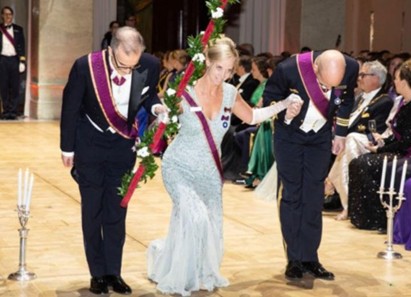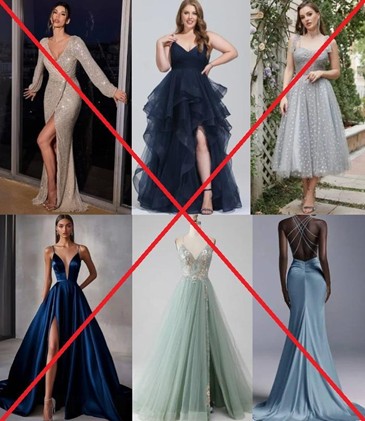Purpose of the Dress Code
Throughout history, dress codes have served to guide guests in selecting attire that is appropriate to the occasion, thereby fostering a sense of comfort and cohesion among all attendees. Observance of the prescribed dress code is a gesture of courtesy towards fellow guests and, in our context, towards the Order. It ensures a dignified and harmonious gathering.
The General Conclave therefore respectfully requests that all Guests, Members, and Recipients adhere to the Order’s dress code, in the interest of decorum and collective enjoyment.
Prescribed Attire
The Order’s dress code stipulates formal civilian or military attire. For ladies, formal civilian dress is defined as a full-length evening gown, national costume, or clerical robe.
Ladies participating in the ceremonial procession during the Day of Solemnity (the Chapter of the Order) are additionally encouraged to wear long gloves with a sleeveless evening gown.

Guidelines for an Appropriate Evening Gown
- The gown must be full-length, reaching the floor.
- Length should be measured while wearing the intended shoes.
- A clearance of approximately 1 cm from the floor is advisable to prevent tripping or stepping on the hem.
- The bodice should be modestly cut, avoiding deep necklines at the bust or back.
- The midriff must be covered.
- The skirt should be free of slits.
- Gowns should not be entirely black or entirely white.
A useful point of reference may be the attire worn by the Royal ladies at the Nobel Banquet or other formal occasions.
Examples of Non-Compliant Attire
A general internet search for “ball gown” may yield the following examples which, for the reasons outlined above, are deemed unsuitable for the Day of Solemnity:

Order Decorations
- Rosette-style decorations are to be worn over the heart; decorations with a ribbon are to be worn over the right shoulder.
- Decorations with ribbons should not rest directly on bare skin or the neck. It is recommended to affix the ribbon discreetly to the gown, for instance using small brooches at the front and back.

- Only official orders and medals may be worn in addition to the decorations of the Order of Innocence. Decorations from charitable societies, however commendable their work, are not permitted on the Day of Solemnity. These include: Military Order of the Collar (M.O.C.), Order of Saint Lazarus, Knights Templar, Ordo Sancti Constantini Magni, Austrian Albert Schweitzer Society, among others.
Additional Considerations
- Gloves should be removed when seated at the dinner table but may be worn during dancing.
- An evening bag should be small and refined, typically the size of a clutch – sufficient for a mobile phone, lipstick, and handkerchief. Larger bags are not appropriate at formal occasions.
- Although shoes may be largely concealed beneath the gown, they become visible in motion and are among the most prominent elements of formal attire. Worn or soiled shoes detract from the overall impression and may be perceived as a lack of respect for the occasion and company. Select footwear that is both elegant and suitable for dancing. - Ensure the gown is tried on with the chosen shoes.
- At formal events, the ensemble should be thoughtfully composed. Colours and materials ought to harmonise.
A Final Reflection
Proper attire elevates the solemnity of the occasion and conveys respect for both the Order and fellow celebrants.
Enquiries
Should You require further guidance or clarification, You are most welcome to contact:



